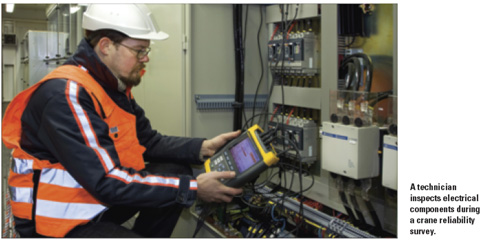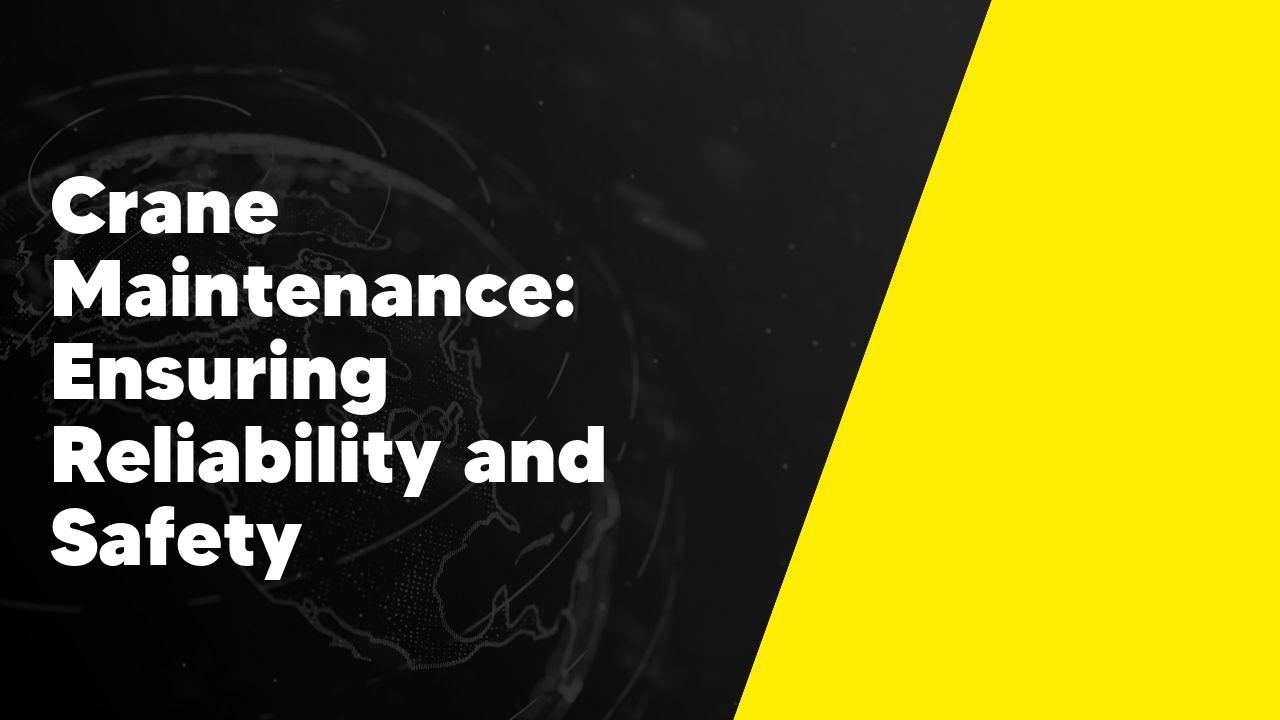Crane maintenance is crucial for ensuring the reliability and safety of these heavy machinery. Regular maintenance checks and inspections help identify any potential issues or malfunctions that could lead to accidents or breakdowns. By prioritizing crane maintenance, companies can minimize downtime, increase productivity, and protect the well-being of their workers.
The Importance of Regular Crane Maintenance for Reliability and Safety
Regular crane maintenance is crucial for ensuring both reliability and safety in crane operations. Cranes are complex machines that undergo significant wear and tear during their operation. Regular maintenance helps identify and address any potential issues before they become major problems, reducing the risk of accidents and breakdowns. It also helps extend the lifespan of the crane and its components, saving on costly repairs and replacements. Additionally, regular maintenance ensures that the crane operates at its optimal performance, improving productivity and efficiency. Overall, investing in regular crane maintenance is essential for maintaining a safe and reliable working environment.
Key Components to Focus on During Crane Maintenance

Crane maintenance is crucial to ensure the safe and efficient operation of these heavy lifting machines. There are several key components that should be given special attention during maintenance checks. Firstly, the hoist system should be thoroughly inspected for any signs of wear and tear, such as frayed cables or damaged hooks. The boom and jib should also be carefully examined for any cracks or structural weaknesses. Additionally, the electrical system, including the control panel and wiring, should be checked for any faults or malfunctions. Lastly, the safety devices, such as limit switches and overload protection systems, should be tested to ensure they are functioning properly. By focusing on these key components, crane maintenance can help prevent accidents and prolong the lifespan of the equipment.
Common Crane Maintenance Issues and How to Address Them
Maintaining cranes is crucial to ensure their optimal performance and longevity. However, there are common maintenance issues that crane owners often encounter. One of the most common issues is wear and tear on the crane’s components, such as cables, pulleys, and hooks. Regular inspections and lubrication can help address this issue. Another common problem is electrical malfunctions, which can be caused by loose connections or faulty wiring. It is important to regularly check the electrical system and address any issues promptly. Additionally, crane operators should be trained to identify and address issues related to load capacity and stability. By addressing these common maintenance issues, crane owners can ensure the safe and efficient operation of their equipment.
The Role of Preventive Maintenance in Ensuring Crane Reliability
Preventive maintenance plays a crucial role in ensuring the reliability of cranes. By regularly inspecting and maintaining cranes, potential issues can be identified and addressed before they turn into major problems. This proactive approach helps to prevent breakdowns and costly repairs, minimizing downtime and maximizing productivity. Preventive maintenance also helps to extend the lifespan of cranes, reducing the need for premature replacements. Additionally, regular maintenance ensures that cranes are operating safely, reducing the risk of accidents and injuries. Overall, investing in preventive maintenance is essential for maintaining the reliability and efficiency of cranes, ultimately benefiting both the operators and the businesses they serve.
Crane Maintenance Best Practices for Optimal Performance and Safety
Crane maintenance is crucial for ensuring optimal performance and safety in any construction or industrial setting. By following best practices, companies can minimize downtime, reduce the risk of accidents, and extend the lifespan of their cranes. Regular inspections should be conducted to identify any signs of wear and tear, such as loose bolts or damaged cables. Lubrication of moving parts is essential to prevent friction and ensure smooth operation. Additionally, operators should be trained on proper crane usage and maintenance procedures. By implementing these best practices, companies can ensure that their cranes are operating at their best, promoting a safe and efficient work environment.
The Benefits of Partnering with a Professional Crane Maintenance Service
Partnering with a professional crane maintenance service can offer numerous benefits for businesses in various industries. Firstly, it ensures that cranes are regularly inspected and maintained, reducing the risk of accidents and breakdowns. This not only promotes a safe working environment but also minimizes downtime and costly repairs. Additionally, professional crane maintenance services have the expertise and knowledge to identify potential issues before they become major problems, saving businesses time and money. They also have access to specialized tools and equipment, ensuring that cranes are serviced and repaired efficiently. Overall, partnering with a professional crane maintenance service is a smart investment that can improve productivity, safety, and the longevity of cranes.
Conclusion
In conclusion, crane maintenance is crucial for ensuring the reliability and safety of these heavy machinery. Regular inspections, repairs, and replacements of worn-out parts are necessary to prevent accidents and breakdowns. By investing in proper maintenance, companies can minimize downtime, increase productivity, and protect the well-being of their workers.
1. Why is crane maintenance important?
Crane maintenance is important to ensure the reliability and safety of the equipment. Regular maintenance helps identify and address any potential issues before they become major problems, reducing the risk of accidents and breakdowns.
2. How often should cranes be maintained?
The frequency of crane maintenance depends on various factors, including the type of crane, its usage, and the manufacturer’s recommendations. Generally, cranes should be inspected and maintained at least annually, but more frequent inspections may be necessary for heavy usage or harsh operating conditions.
3. What does crane maintenance involve?
Crane maintenance involves a range of activities, including visual inspections, lubrication of moving parts, testing of safety features, and checking for any signs of wear or damage. It may also include more in-depth inspections and testing of critical components.
4. Who should perform crane maintenance?
Crane maintenance should be performed by qualified and trained personnel who have the necessary knowledge and experience to identify and address potential issues. It is recommended to hire certified crane technicians or rely on the manufacturer’s authorized service providers.
5. What are the consequences of neglecting crane maintenance?
Neglecting crane maintenance can lead to various consequences, including increased risk of accidents, equipment breakdowns, and costly repairs. It can also result in downtime and loss of productivity, as well as potential legal and regulatory issues if safety standards are not met.
6. How can I ensure proper crane maintenance?
To ensure proper crane maintenance, it is important to follow the manufacturer’s recommended maintenance schedule and guidelines. Regularly inspect the crane for any signs of wear or damage, and promptly address any issues that arise. Additionally, provide proper training to operators and establish a culture of safety and maintenance within the organization.

